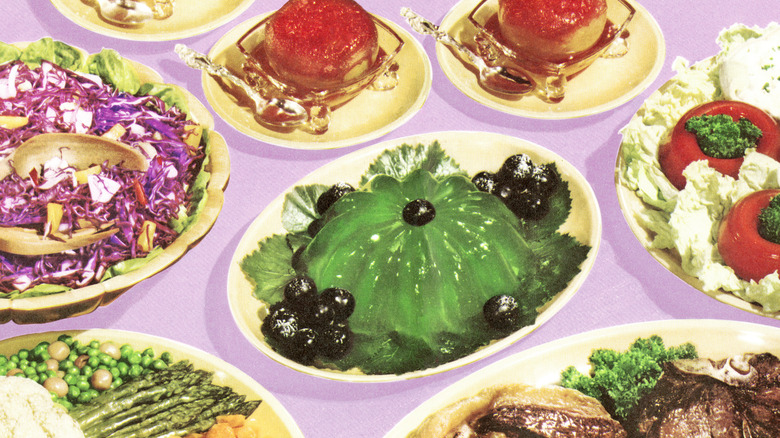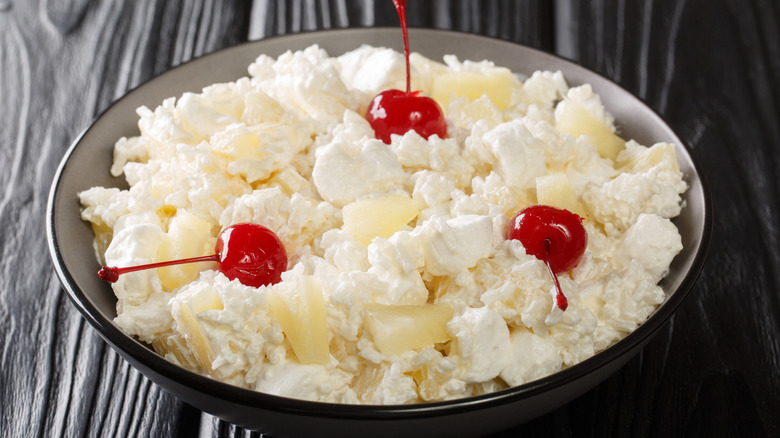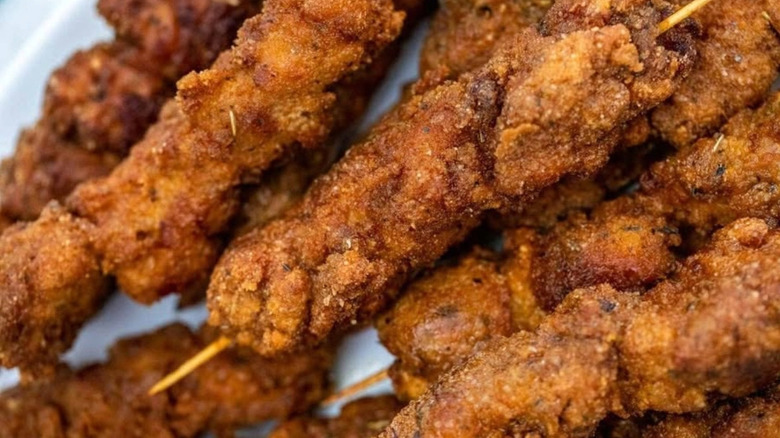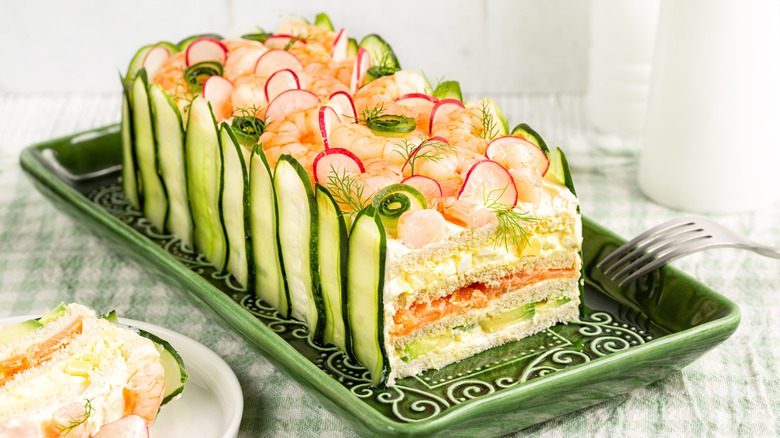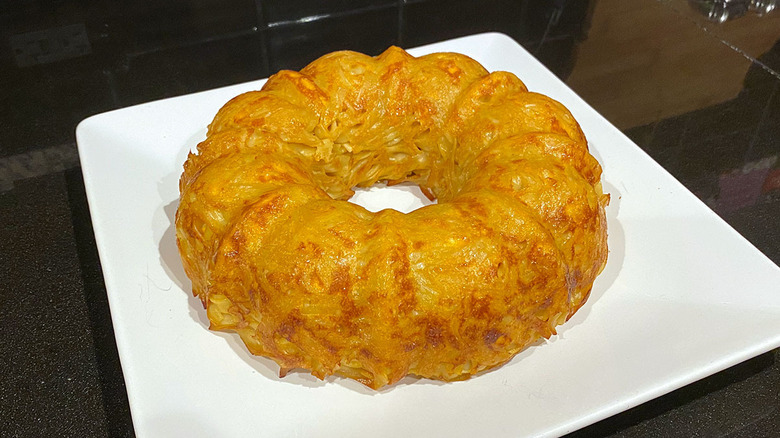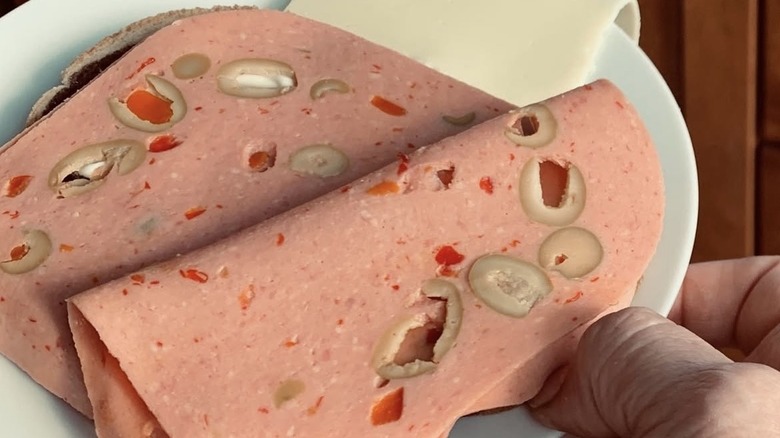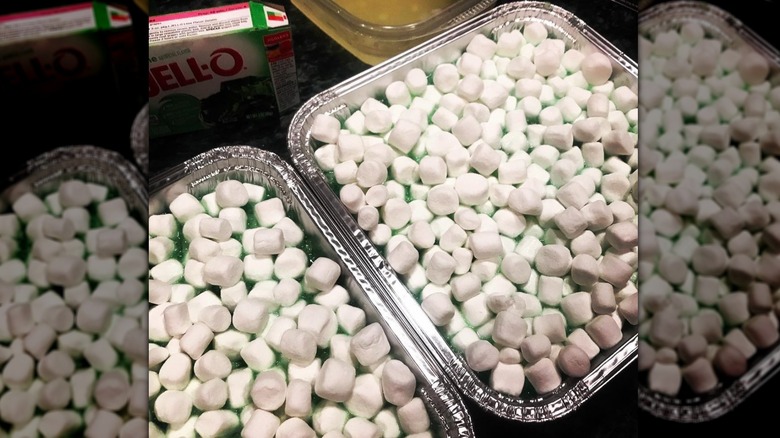6 Midwestern Comfort Foods That You Rarely See Anymore
The American Midwest is often associated with comfort foods that feed a crowd. From hotdishes to creative salads and molds, Midwest home cooks have always found innovative ways to use common ingredients to create something truly unique and delicious. However, some of the Midwest classics that once graced tables at potlucks and family gatherings have seemed to vanish as tastes change and ingredients become more available. These quirky, retro dishes may be forgotten relics of a simpler time, but they still hold a special place in the hearts of many Midwesterners.
Today, we're paying homage to these dishes, taking a closer look at some of these comfort foods that were so popular throughout the Midwest. While they may not be featured on your dinner table today, they were once the height of down-home cooking. Often, these dishes were used as beautiful centerpieces to showcase the home cook's creativity and exceptional cooking skills. From molded pastas to fried chicken look-a-likes, these retro dishes were a sight to behold (and a delight to taste).
Glorified rice
A dish of cold rice and marshmallows might sound unusual today, but during the mid-20th century, this dish was a staple at church potlucks and holiday tables throughout the upper Midwest. Believed to have originated from Scandinavian immigrants who brought their love for gelatinous dishes to the area, glorified rice was a commonplace in Scandinavian and Lutheran homes in Minnesota.
Glorified rice is considered a vintage marshmallow fluff-type salad. Most recipes for glorified rice call for cooked rice that has been chilled, mixed with whipped cream, crushed pineapple, mini marshmallows, and topped with maraschino cherries. Other variations included adding bananas, apples, nuts, or Jell-O. To make this retro salad creamy, home cooks would cook their rice in cream so that it would melt in the mouth, rather than having that distinct cold rice crunch. This dish is best served cold, so store it in the refrigerator for at least two hours before serving.
City chicken
Despite the name, city chicken does not contain any poultry. Instead, it contains pork, veal, or a mixture of both. These cubes of meat are placed on a skewer, breaded, deep-fried, and baked to resemble fried chicken. Home cooks even used a specific tool to make the skewered meat resemble a chicken leg.
City chicken was considered a comfort food for the working class, particularly during the Great Depression. City chicken was a way for working-class families to have the a "chicken dinner" without breaking the bank. During the Great Depression and for quite some time afterward, chicken was an expensive source of protein, while pork and veal were much cheaper. This lead to home cooks creating creative "chicken" dishes without the chicken. However, as chicken prices decreased (and veal conversely became more expensive), it was actually much easier and cheaper to serve actual chicken.
Frosted sandwich loaf
The "is it cake?" phenomenon may not be as new as it seems. During the postwar period, the frosted sandwich loaf blurred the line between savory and dessert. While it might not be as deceiving as the cake creations of today, seeing a loaf covered in cream cheese and discovering that it's actually a sandwich might be just as surprising.
Ribbon sandwiches were typically seen at events such as baby showers, afternoon tea, and other occasions that were more formal than the average lunch. However, in the 1950s, variations of the classic ribbon sandwiches emerged as creations like the frosted ribbon sandwich loaf and other popular sandwiches of the time. The frosted ribbon sandwich loaf contained many of the same ingredients as a classic ribbon sandwich, layered with different fillings. However, instead of small squares, the layered sandwiches were fashioned into a loaf shape, frosted with cream cheese. The loaf was then decked out with herbs, vegetables, and edible flowers for a sophisticated vibe.
Noodle ring
You may be familiar with Bundt pans as a way to make beautifully shaped cakes, but in the mid-20th century, they were used for everything from gelatin salads to baked noodle casseroles (or hotdishes, as they are referred to in the Midwest). Popular in the 1950s and 1960s, the noodle ring was basically a molded casserole using this utilitarian pan. The unique shape and ability to decorate it with colorful ingredients made it a fancier dish. During the time of molded dishes, presentation was everything, and the noodle ring did not disappoint.
This dish was often made with cooked pasta mixed with eggs, milk, butter, and cheese in a Bundt pan and baked in the oven. Typical pastas that were used include elbow macaroni or spaghetti. Some home cooks took it a step further and added ingredients like ham, ground beef, sausage, peas, mushrooms, or bell peppers. Like most molded dishes, the added ingredients were often placed in a way to create "decoration" on the dish.
Olive loaf
Basically bologna with green olives and pimentos, this deli meat was once a favorite of the 1970s and 1980s. Olive loaf is similar to mortadella, but appears to be specifically an American concoction. It showed up in many lunch boxes as a favorite sandwich. Still, it fell out of popularity around the 1990s when people started being a little more conscientious about the food they are consuming, including the abundance of salt often found in processed meat.
Olive loaf is typically made with a combination of pork, beef, and chicken that is ground and mixed with spices. Green olives and pimentos, coated in milk powder, are then added to the mix. Then, the mixture is put in a sausage casing, cooked, and then cooled. Once cooled, pieces could be sliced off and placed on your favorite sandwich bread. While once a popular deli meat, it is harder to find olive loaf today. Although, some stores (mostly in the Midwest) still carry Oscar Meyer brand olive loaf.
7Up salad
Jell-O dishes were popular during the 1950s, and 7Up salad was one of the creative combinations that emerged from that era. It was a favorite in the Midwest, especially during summer get-togethers like church potlucks or backyard barbecues. During the Great Depression, Jell-O dishes gained significant popularity, reaching their peak in the 1950s. These dishes were not just filling and fun to eat, but they were creative and beautiful centerpieces. However, Jell-O salads and molds started to fall out of fashion in the 1970s.
7-Up salad was one of the more tame Jell-O salads that were popular during the time, with other Jell-O dishes containing meats, vegetables, and even savory Jell-O flavors. It was often seen as a dessert salad and featured lime Jell-O, crushed pineapple, lemon-lime soda, and Cool Whip, often in a Jell-O mold and served cold. Its bright, almost neon, green color popped on Midwest tables.

